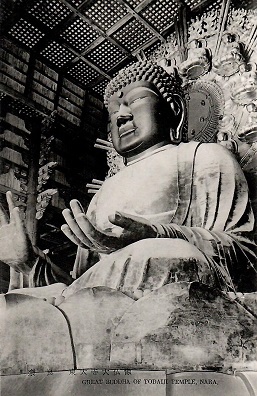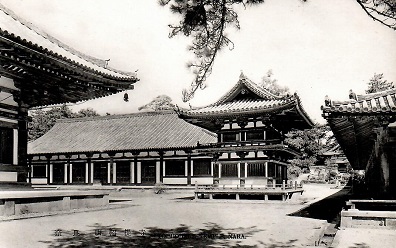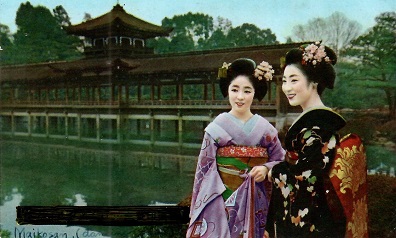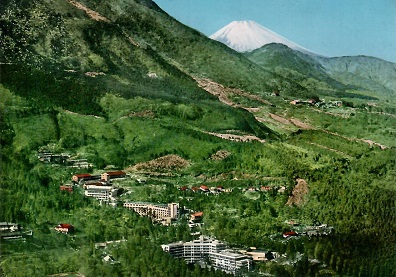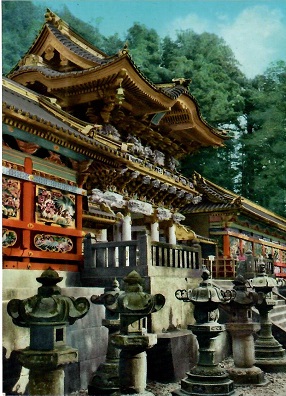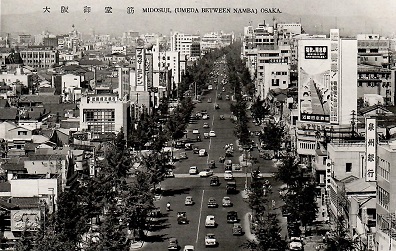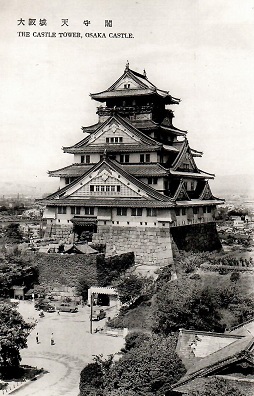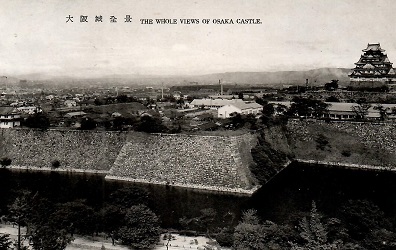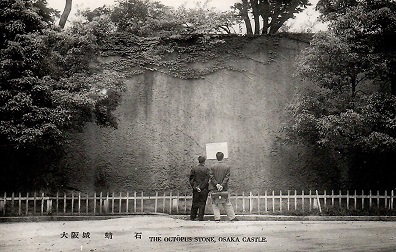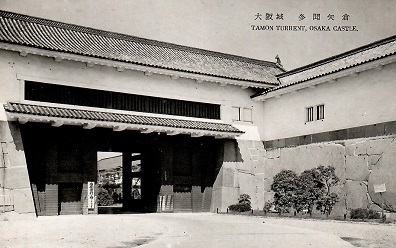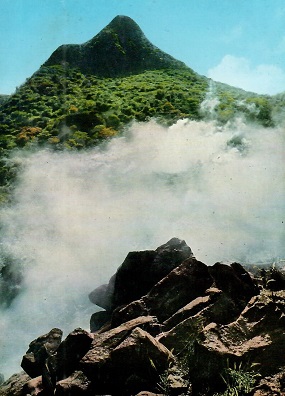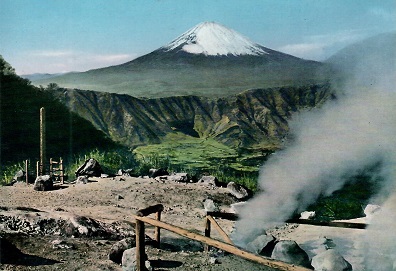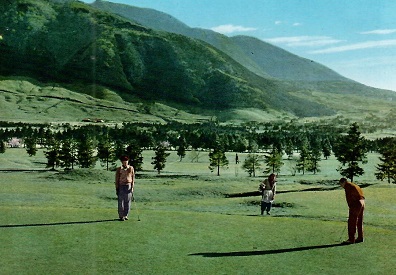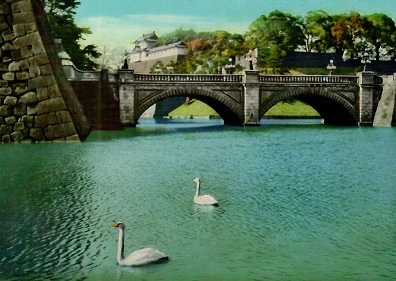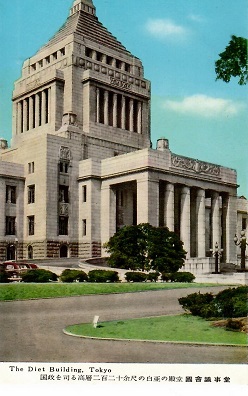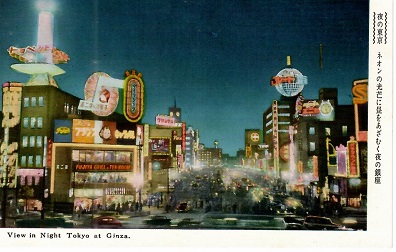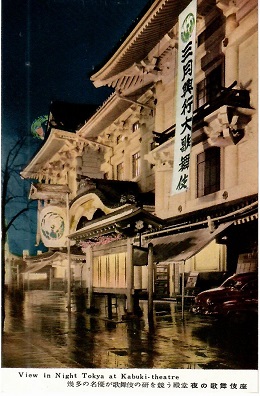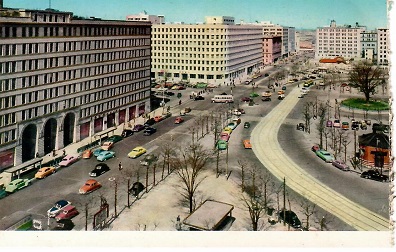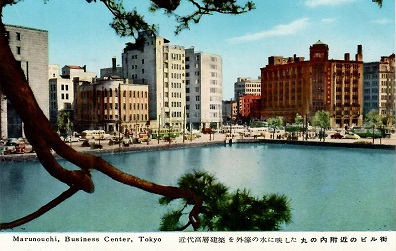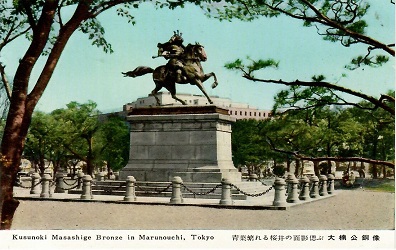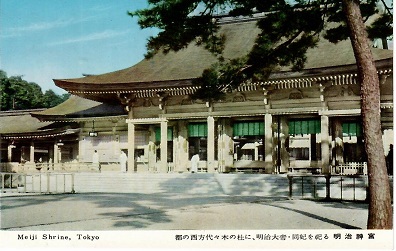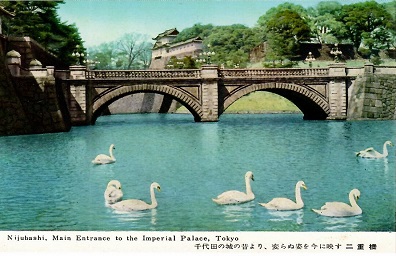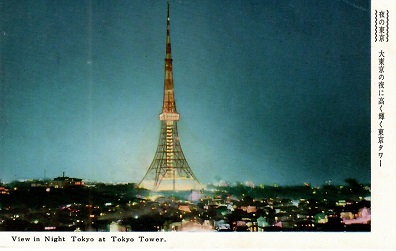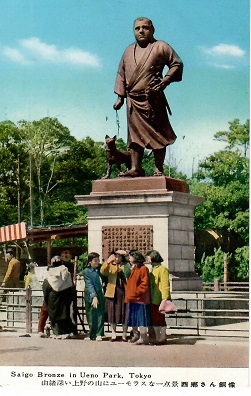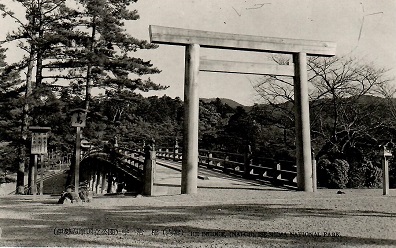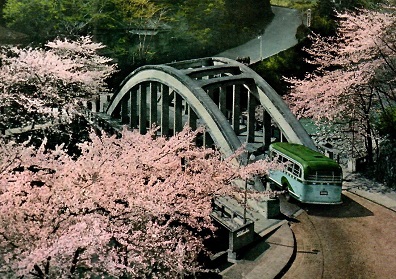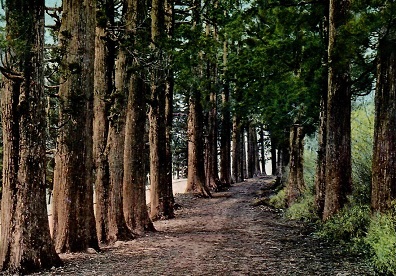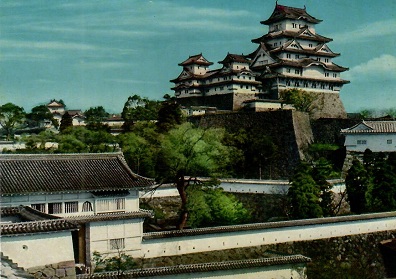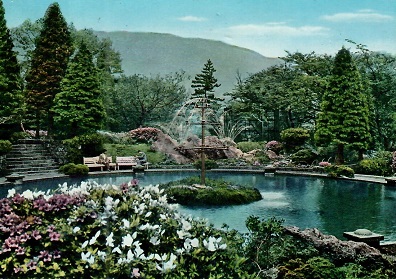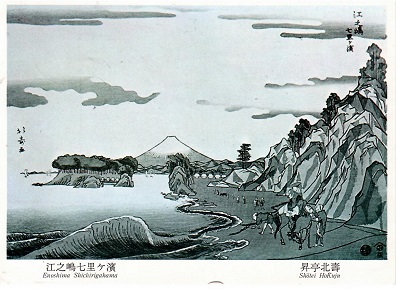-
Nara, Great Buddha
Superb unused mid-20th-century postcard. Grade: 1
-
Nara, Toshodaiji Temple (?)
One of the downsides of placing a black caption on a black background is that it’s hard to read. This is an old and unused card. We can make out “To-shodai … Temple, Nara” and that should be enough proof but if we’re wrong, please let us know. Meanwhile, we know that (唐招提寺, Tōshōdaiji) was founded in the year 759 by Ganjin, a Chinese priest who was invited to Japan by the emperor in order to train priests and improve Japanese Buddhism. Ganjin’s influence was monumental, and his teaching at Toshodaiji (which roughly translates to “temple of the one invited from Tang China”) was important in that process. Toshodaiji’s main hall (kondo) re-opened in late 2009 after being renovated over almost ten years, during which the building was dismantled and reconstructed. The temple’s lecture hall (kodo) was originally an administrative building located in the Nara Imperial Palace and was later moved to Toshodaiji. Today, it is the only surviving building of the former palace. So what you see in the postcard has a slightly different view than it might look now. Some smudging on the reverse. Grade: 2
-
Maiko-san
Maiko means “dancing child” which refers to apprentice geisha who are still training. Maiko have to live in the geisha lodging house (okiya) with their mother (okami-san) for five years. Maiko is not allowed to have a cell phone, carry any money, or have a boyfriend. And how do we know this card shows maiko? Because, long ago, someone wrote that notation on the lower front left corner. There is a brief Japanese caption on the reverse of this unmailed old postcard. Grade: 3
-
Kowakidani Spa
You will get nowhere if you just enter the brief English caption from this unused very old postcard into Google, but the Japanese caption is much longer and more instructive. In any event, Grade: 1
-
Sacred Bridge at the entrance to Nikko
This red lacquered bridge spans the Daily River. The mid-20th-century postcard is unused. Grade: 1
-
Nikko, Yomeimon Gate
Unused old postcard. Grade: 1
-
Osaka, Midosuji
Midōsuji Avenue is the primary main street in central Osaka, running north-south, passing Umeda, Nakanoshima, Shinsaibashi, Dōtonbori, Ame-mura, and Namba districts. The Midōsuji Line subway runs under it. This mid-20th-century unused black and white postcard is a brilliant representation of the city at that time. Grade: 1
-
The Views of Front Osaka Station
Unused old card of a post-war, bygone time. There’s a long caption in Japanese on the reverse. Grade: 1
-
Osaka, Sen-nichi-mae
On this mid-20th-century unused card, the area is termed as “Amusement Centers”. We don’t know Osaka well, but it seems to have been repositioned now — according to an official Osaka website (we’ve condensed a bit) — as “Sennichimae Doguyasuji Shopping Street is lined with specialty stores of all kinds of cooking utensils and kitchen items. Stores stocking tools accommodating (chefs) congregate in Doguyasuji. It started as an approach from Sennichimae of Hozenji temple to Odaishi worship at Shitennoji temple and Imaebisu Shrine lined with antique and sundries stores. In the early 20th century, they developed as wholesale stores and specialty stores of manufacturing. The arcade was built in 1970 to become the current 150m-long shopping street.” Same area? Wholesale stores are not amusement centers, usually. Grade: 1
-
Osaka, The Castle Tower
Unused old B&W postcard. Long Japanese caption on the back. Grade: 1
-
The Whole Views of Osaka Castle
Might be the whole views, but not the most inspiring of views. Nevertheless, this mid-century unused card is still in excellent condition. Grade: 1
-
Osaka Castle, The Octopus Stone
The octopus stone, Taiko-ishi 蛸石 (also called “Drum Rock”) is a large stone near the castle’s Sakura Gate. It is one of the largest megaliths at the castle (by face area), at 5.5×11.7 meters and over 130 tons, and its name is derived from the octopus shape some say is visible on its lower left corner. Not everyone agrees about that now, though. The postcard is old and unused. Grade: 1
-
Osaka Castle, Tamon Turrent (sic)
The Tamon Turret (Tamon-Yagura) (not Turrent, as the card says) was originally built in 1628. In 1783 it was destroyed by lightning and reconstructed in 1848. Major restoration work was done in 1969. Tamon-Yagura is the largest remaining turret of this kind in the country and covers over 600 square meters, atop the stone walls of Ote-mon Gate on the western side of the Castle. This mid-20th-century postcard, unused, has a long caption in Japanese to tell you more. Grade: 1
-
Owakidani (sic)
Ōwakudani (大涌谷, lit. “Great Boiling Valley“), and not “Owakidani” as the card’s caption has it, is a volcanic valley with active sulphur vents and hot springs in Hakone. It was created around 3,000 years ago as a result of the explosion of the Hakone volcano. It’s a popular tourist site for scenic views, volcanic activity, and kuro-tamago (黒卵, lit. “black egg”) — a local specialty of eggs hard-boiled in the hot springs they turn black and smell slightly sulphuric, and eating one is said to add seven years to your life. (How fast can we get there?) Unused old postcard with a longer Japanese caption on the reverse. Grade: 1
-
Mt. Fuji from Owakidani (sic)
Unused old card as a follow-up to the previous entry. Note the current spelling is “Owakudani”. Grade: 1
-
Tokyo, The Imperial Palace, Double Bridge
Unused mid-20th-century postcard with brief Japanese and longer English caption. Grade: 1
-
Tokyo, Diet Building
The National Diet Building (国会議事堂) is where both houses of the National Diet of Japan meet. Sessions of the House of Representatives take place in the south wing and sessions of the House of Councillors in the north wing. Completed in 1936, it’s constructed entirely of Japanese materials, with the exception of the stained glass, door locks, and pneumatic tube system. This postcard dates from mid-20th century and is unused. Grade: 1
-
Tokyo, The Diet Library
Unused, older card in excellent condition. Grade: 1
-
Tokyo, Ginza at Night
More colourful now than on this old, unused postcard of one of Tokyo’s most famous districts. Grade: 1
-
View in Night Tokyo at Kabuki – theatre
Unused and atmospheric old postcard. Grade: 1
-
City Street
The only thing we know for certain about this old, unused postcard is that it comes from Japan. But what we suppose is a printing error means there’s no caption on the front, as there is on other cards in this series. Osaka? Tokyo? Those are the two likely candidates. We’ll leave it for you to identify. Grade: 1
-
Tokyo, Marunouchi, Business Center
Colourful and clear mid-20th-century unused postcard. Grade: 1
-
Tokyo, Marunouchi, Kusunoki Masashige Bronze
Kusunoki Masashige (楠木 正成, 1294 – 1336) was a Japanese samurai of the Kamakura period remembered as the ideal of samurai loyalty. Kusunoki fought for Emperor Go-Daigo in the Genkō War to overthrow the Kamakura shogunate and restore power in Japan to the Imperial Court. He was a leading figure of the Kenmu Restoration in 1333, remained loyal to unpopular Emperor Go-Daigo after Ashikaga Takauji began to reverse the restoration in the Nanboku-chō wars three years later, attacked Takauji at the command of the Emperor — an act of obedience sure to result in defeat — and died at the Battle of Minatogawa. Kusunoki became a popular legend in Japan representing loyalty and virtue, and is associated with the phrase “Would that I had seven lives to give for my country!” Kusunoki was posthumously awarded the highest court rank in Japan, Senior First Rank, by the Meiji government in 1880. And of course his legend lives on within his imposing statue, as you see on this unused old card. Grade: 1
-
Tokyo, Meiji Shrine
Unused old card, multi-captioned on the front. Grade: 1
-
Tokyo, Nihombashi (sic) Bridge
Nihonbashi (日本橋) is today’s preferred western spelling, a business district of Chūō which grew around the bridge of the same name that has linked two sides of the Nihonbashi River at this site since the 17th century. The first wooden bridge was completed in 1603. The current bridge, designed by Tsumaki Yorinaka and constructed of stone on a steel frame, dates from 1911. This brilliant urban postcard is old, unused, and Grade: 1
-
Tokyo, Imperial Palace, Nijubashi
The bridge here is the main bridge to the Imperial Palace, called by at least one source “arguably the most famous bridge in Japan”. Most people call it Nijūbashi but the correct name is 正門石橋 (main entrance stone bridge). There are actually two main bridges, to the Imperial Palace. The 正門石橋 seimon ishibashi (main entrance stone bridge) and the 正門鉄橋 seimon tetsubashi (main entrance iron bridge). In any event here’s an old postcard of 正門石橋 , unused and Grade: 1
-
Tokyo Station
Unused mid-20th-century card whose left edge is a bit ragged as if it had been bound into a set. Only for this reason, we assign: Grade: 2
-
Tokyo Tower, View in Night
Tokyo Tower (東京タワー, officially called 日本電波塔 “Japan Radio Tower”) is a communications and observation tower in the Shiba-koen district, built in 1958. At 332.9 meters (1,092 ft), it is the second-tallest structure in Japan. It’s an Eiffel Tower-inspired lattice tower painted white and international orange to comply with air safety regulations. And finally we have indirect evidence of the age of this series of unused postcards: since the tower was built in 1958, these cards must have come very soon afterwards. Grade: 1
-
Tokyo, Ueno Park, Saigo Bronze
Saigō Takamori (Takanaga) (西鄕 隆盛 (隆永), 1828 – 1877) was one of the most influential samurai in Japanese history and one of the three great nobles who led the Meiji Restoration. Historian Ivan Morris described him as “the quintessential hero of modern Japanese history” and this famous bronze statue of Saigō in hunting attire with his dog stands in Ueno Park. Made by Takamura Kōun, it was unveiled on December 18, 1898. Saigō met British diplomat Ernest Satow in the 1860s, as recorded in the latter’s A Diplomat in Japan, and Satow was present at the unveiling as recorded in his diary. This unused 1950s card is Grade: 1
-
Tokyo, Yasukuni Shrine
This must be one of the most controversial (and problematic) locations in Japan if not all of Asia. We will leave it to you to discover why that is, if you don’t already know: we try to stay out of diplomatic issues whenever possible. However this is just a postcard, with the shrine’s image having been captured after the end of World War II. Unused 1950s card, Grade: 1
-
Ise-Shima National Park, Toyouke Great Shrine (Gegu)
Ise-Shima National Park encompasses most of the Shima Peninsula in Mie Prefecture. The area has an abundance of fish, shellfish and other foods, and was once called Miketsu Kuni, meaning “providers of food to the imperial court.” It still feels like a sacred place and is home to some of Japan’s most ancient and revered Shinto shrines, including this one, the Outer Shrine (外宮), one of two main shrines making up the Ise Shrines. Formally known as the Toyouke Daijingu, the Outer Shrine enshrines Toyouke Omikami, the Shinto deity and guardian of food, housing and clothing. Unused, older B&W card with Japanese caption on the reverse. Grade: 1
-
Tokyo, National Museum
Unused card from the 1950s. Grade: 1
-
Ise-Shima National Park, The Bridge (Nai-Gu)
A reasonably typical example of old Japan postcards (we say it that way for the search engines), unused and Grade: 1
-
Yumoto (Hakone), Asahi Bridge
A brief English caption and longer Japanese one on this unused older postcard. Grade: 1
-
Osaka, Umeda Station
Although there’s no English caption on this unused old postcard, we did a bit of work with the long Japanese explanation, and the signboards, and now believe the card shows Osaka’s Umeda station. It was, in any case, a picture from decades ago. Grade: 1
-
Avenue of Cedar Trees
The English caption on this unused old card is the same as our header, but the Japanese caption is much longer. It’s possible that it tells us where this is, but we’ve not checked. Grade: 1
-
White Heron Castle
Himeji Castle (姫路城) is a hilltop complex in Hyōgo Prefecture, regarded as the finest surviving example of prototypical Japanese castle architecture. There’s a network of 83 rooms with advanced defensive systems from the feudal period. The castle is frequently known as “White Egret Castle” or “White Heron Castle” because of its brilliant white exterior and supposed resemblance to a bird taking flight. Himeji Castle dates to 1333 when Akamatsu Norimura built a fort on top of Himeyama hill; the fort was dismantled and rebuilt as Himeyama Castle in 1346 and then remodeled into Himeji Castle two centuries later. And so on. This unused old card has an English caption that unaccountably fails to name the castle’s exact location — but we know, and have told you. Grade: 1
-
Hakone, Gora Park
Gora Park (強羅公園) is a Western-style landscape park located above Gora Station, and primarily a French-styled landscape park featuring a large fountain and a rose garden. This card was mailed in 1981 with two stamps, full postmark, bilingual “Par Avion” chop, and a virtually invisible thumbtack hole. (Trust us on that.) Grade: 3
-
Enoshima
This B&W card has much more in the captions on the front but we’ll leave that to you to decipher. It was mailed in the early 1990s with two different stamps, most of a postmark, bilingual Par Avion chop, and an orange sticker affixed by someone’s post office, we think. Grade 3

